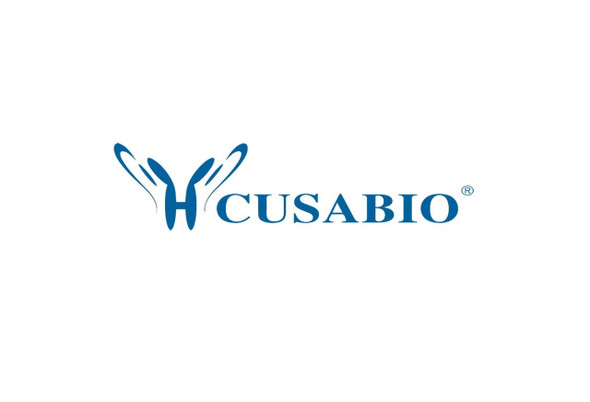Cusabio Mouse Recombinants
Recombinant Mouse Ubiquitin-protein ligase E3A (Ube3a) , partial | CSB-MP025488MO
- SKU:
- CSB-MP025488MO
- Availability:
- 18 - 28 Working Days
Description
Recombinant Mouse Ubiquitin-protein ligase E3A (Ube3a) , partial | CSB-MP025488MO | Cusabio
Alternative Name(s): Oncogenic protein-associated protein E6-AP
Gene Names: Ube3a
Research Areas: Cell Biology
Organism: Mus musculus (Mouse)
AA Sequence: NPADLKKQLYVEFEGEQGVDEGGVSKEFFQLVVEEIFNPDIGMFTYDEATKLFWFNPSSFETEGQFTLIGIVLGLAIYNNCILDVHFPMVVYRKLMGKKGTFRDLGDSHPVLYQSLKDLLEYEGSVEDDMMITFQISQTDLFGNPMMYDLKENGDKIPITNENRKEFVNLYSDYILNKSVEKQFKAFRRGFHMVTNESPLKYLFRPEEIELLICGSRNLDFQALEETTEYDGGYTRESVVIREFWEIVHSFTDEQKRLFLQFTTGTDRAPVGGLGKLKMIIAKNGPDTERLPTSHTCFNVLLLPEYSSKEKLKERLLKAITYAKGFGML
Source: Mammalian cell
Tag Info: C-terminal Flag-Myc-tagged
Expression Region: 542-870aa
Sequence Info: Partial
MW: 40.9 kDa
Purity: Greater than 90% as determined by SDS-PAGE.
Relevance: E3 ubiquitin-protein ligase which accepts ubiquitin from an E2 ubiquitin-conjugating enzyme in the form of a thioester and transfers it to its substrates. Several substrates have been identified including the RAD23A and RAD23B, MCM7 (which is involved in DNA replication), annexin A1, the PML tumor suppressor, and the cell cycle regulator CDKN1B. Additionally, may function as a cellular quality control ubiquitin ligase by helping the degradation of the cytoplasmic misfolded proteins. Finally, UBE3A also promotes its own degradation in vivo (By similarity). Plays an important role in the regulation of the circadian clock: involved in the ubiquitination of the core clock component ARNTL/BMAL1, leading to its proteasomal degradation (PubMed:24728990)
Reference: "The E3 ubiquitin ligase UBE3A is an integral component of the molecular circadian clock through regulating the BMAL1 transcription factor."Gossan N.C., Zhang F., Guo B., Jin D., Yoshitane H., Yao A., Glossop N., Zhang Y.Q., Fukada Y., Meng Q.J.Nucleic Acids Res. 42:5765-5775(2014)
Storage: The shelf life is related to many factors, storage state, buffer ingredients, storage temperature and the stability of the protein itself. Generally, the shelf life of liquid form is 6 months at -20?/-80?. The shelf life of lyophilized form is 12 months at -20?/-80?.
Notes: Repeated freezing and thawing is not recommended. Store working aliquots at 4? for up to one week.
Function: E3 ubiquitin-protein ligase which accepts ubiquitin from an E2 ubiquitin-conjugating enzyme in the form of a thioester and transfers it to its substrates. Several substrates have been identified including the RAD23A and RAD23B, MCM7 (which is involved in DNA replication), annexin A1, the PML tumor suppressor, and the cell cycle regulator CDKN1B. Additionally, may function as a cellular quality control ubiquitin ligase by helping the degradation of the cytoplasmic misfolded proteins. Finally, UBE3A also promotes its own degradation in vivo (By similarity). Plays an important role in the regulation of the circadian clock
Involvement in disease:
Subcellular Location: Cytoplasm, Nucleus
Protein Families:
Tissue Specificity: Widely expressed. Most abundant in brain, heart and thymus.
Paythway:
Form: Liquid or Lyophilized powder
Buffer: If the delivery form is liquid, the default storage buffer is Tris/PBS-based buffer, 5%-50% glycerol. If the delivery form is lyophilized powder, the buffer before lyophilization is Tris/PBS-based buffer, 6% Trehalose, pH 8.0.
Reconstitution: We recommend that this vial be briefly centrifuged prior to opening to bring the contents to the bottom. Please reconstitute protein in deionized sterile water to a concentration of 0.1-1.0 mg/mL.We recommend to add 5-50% of glycerol (final concentration) and aliquot for long-term storage at -20?/-80?. Our default final concentration of glycerol is 50%. Customers could use it as reference.
Uniprot ID: O08759
HGNC Database Link: N/A
UniGene Database Link: UniGene
KEGG Database Link: KEGG
STRING Database Link: STRING
OMIM Database Link: N/A









